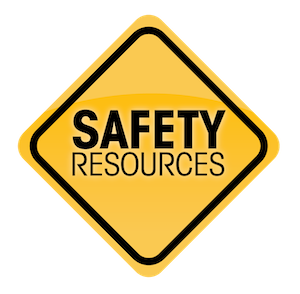To dealership owners, managers and anybody else reading this: It should go without saying, but there is no job worth an injury or a lost limb. There is certainly no job worth a lost life. You don't have to do unprofitable things to maintain a safe environment. Accidents certainly happen, and safety measures fail, but more often than not, accidents are the result of negligence on the part of somebody.
Here are 10 ways to make your dealership a safer place to work:
- Safety procedures for product assembly, splitting tractors, pulling cabs, pulling attachments, and so forth should all be documented.
- There should be a safety walk-through at least once a month by management or an appointed safety officer (insurance companies like Federated provide checklists to make this simple).
- Schedule monthly safety meetings, even if they're only 15 minute "stand-ups," emphasizing the importance of doing jobs safely and right.
- Create and maintain an open line of communication between staff and management for anytime an employee feels like they are being asked to do something unsafe; does not have the tools or equipment to perform duties safely; or is going to have to do something otherwise unsafe to perform their daily duties.
- A service manager or shop foreman should be on staff anytime equipment technicians and porters are there, and make sure safety procedures are being followed on a daily basis.
- The shop is not client-facing. There is no reason to stagger employee breaks in the shop, unless, perhaps, keeping a technician or porter around for PDIs, which doesn't involve high-risk repairs. We have our technicians take breaks (including lunch) at the same time, for this reason.
- An appointed safety officer should be a liaison to the insurance agency and should perform the insurance compliance tour. If the insurance company provides safety homework, it must be completed ASAP as they will not cover claims resulting in inadequate facilities, procedures, or other safety hazards. Compliance will save your bacon in an OSHA audit.
- When performing tractor repairs, always detach loader and backhoe attachments before bringing the tractor into the shop. If the repairs are being made to the attachment itself, detach from the tractor and secure it on stands.
- If the loader is going to remain on the tractor, a chain hoist or gantry crane should keep it suspended. Never rely on a tractor's hydraulic circuit to keep a loader stationary.
- Tractors, mowers, forklifts, and other equipment in operation and testing should be driven at low speeds. It is extremely unprofessional and unsafe to have forklifts flying across the parking lot that are just a sneeze from impaling the side of a Mercedes (or a customer)!
Take a strong look at your facilities and equipment, and make appropriate changes ASAP. People are the company's largest and most important investment. They make or break our success, and they need to know it is important to us that they have a safe work environment and can return home to their families at the end of the day.






Post a comment
Report Abusive Comment